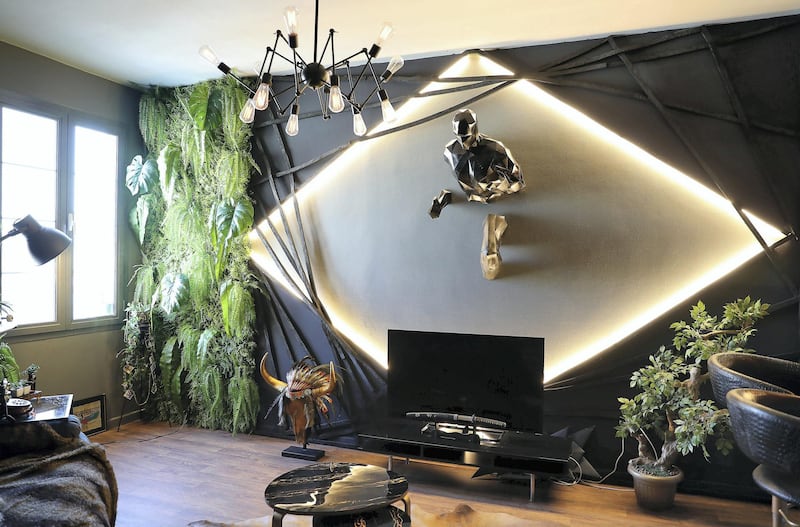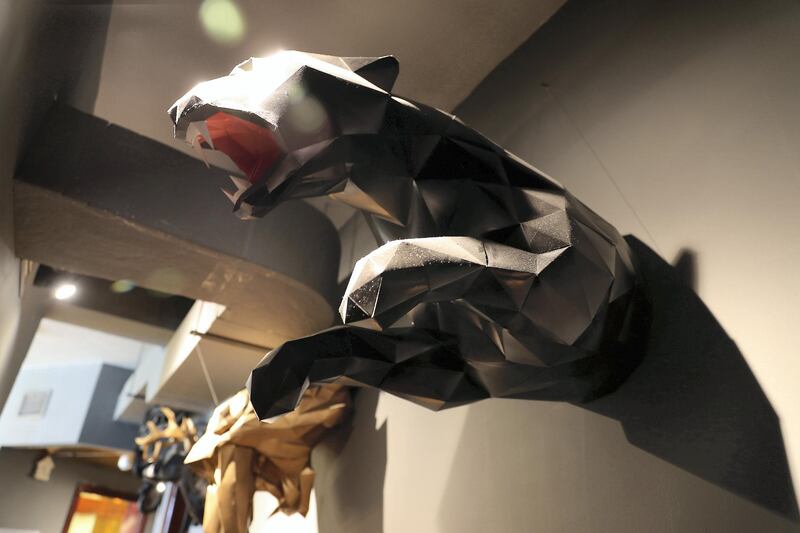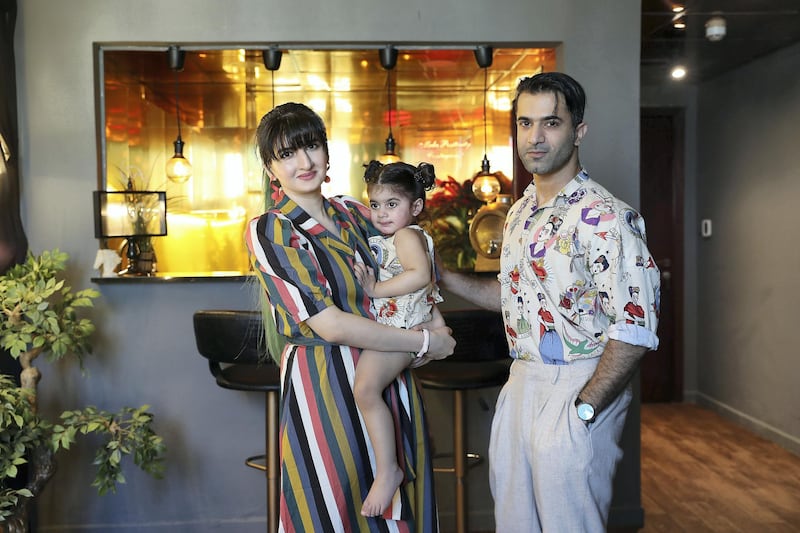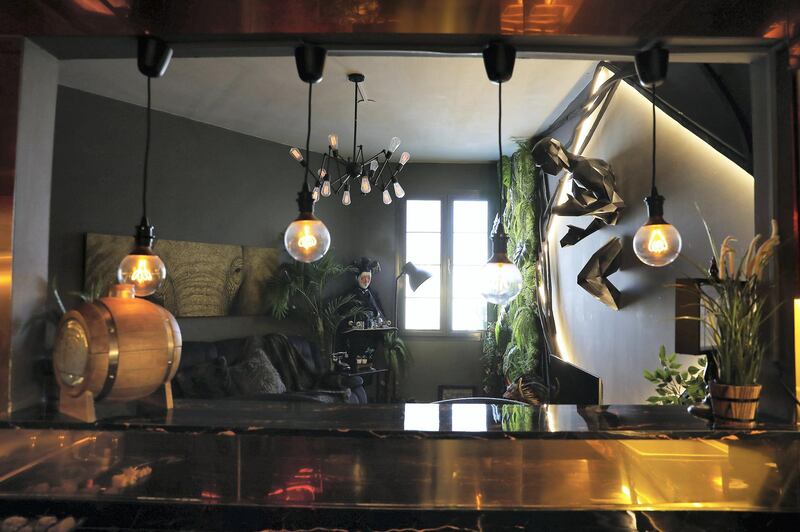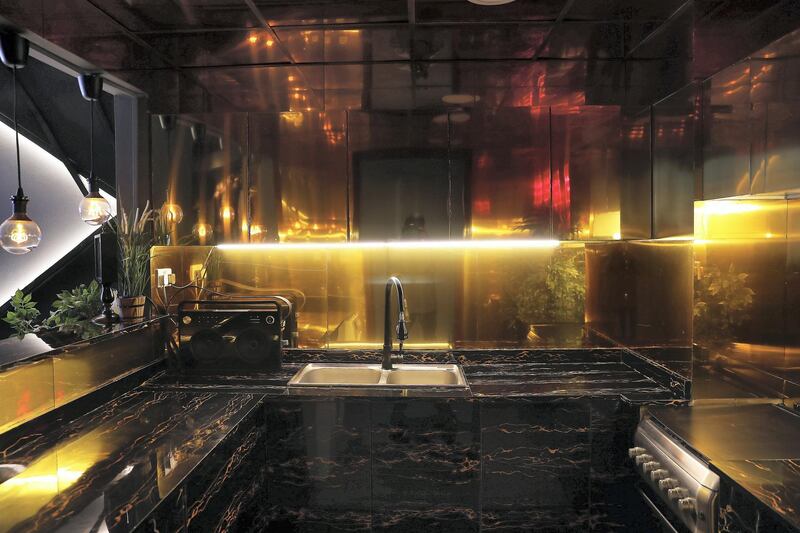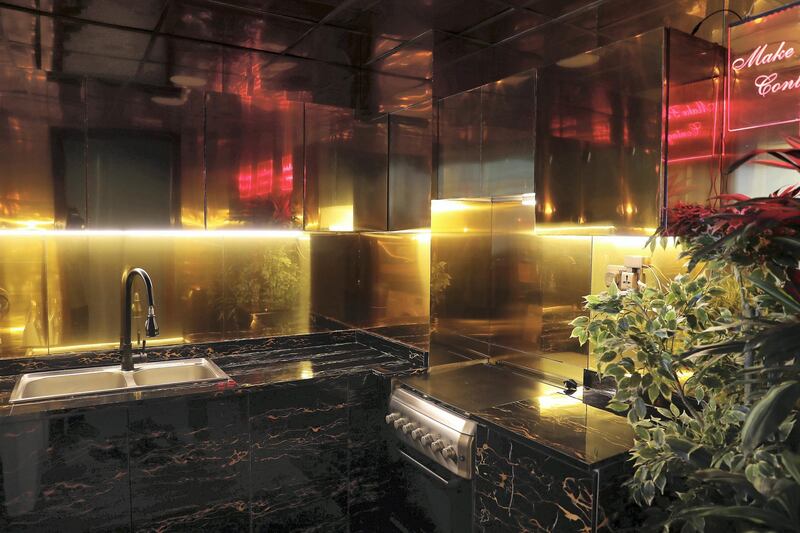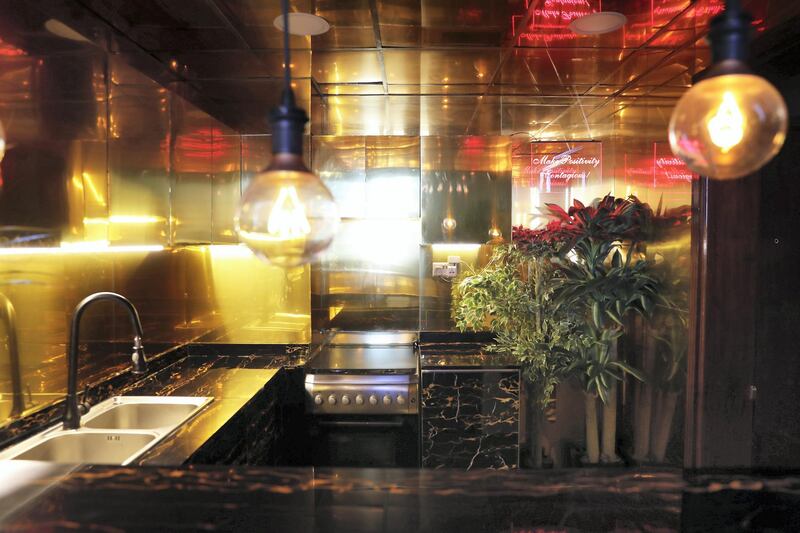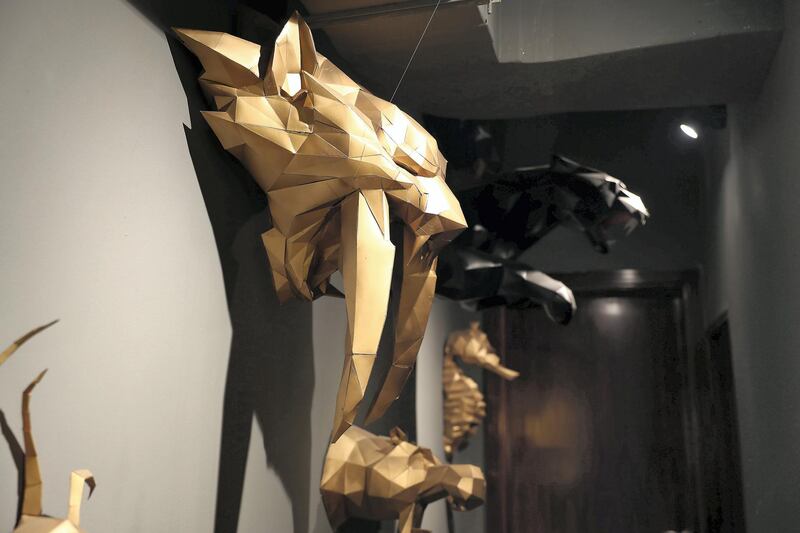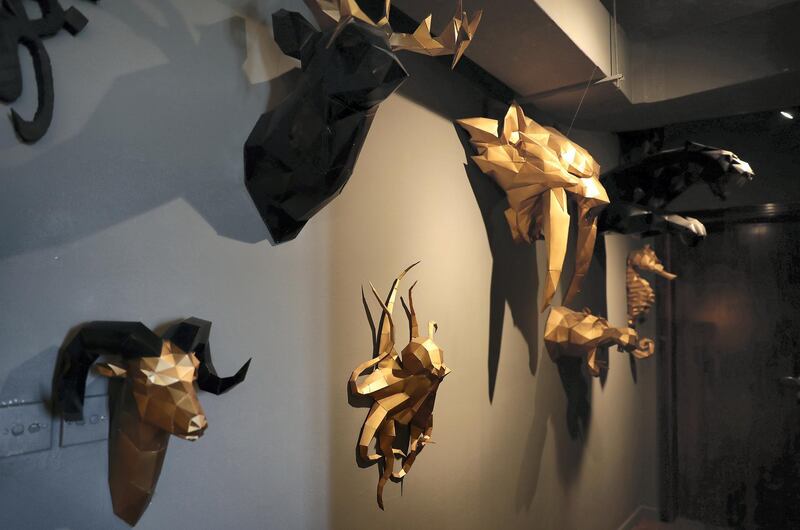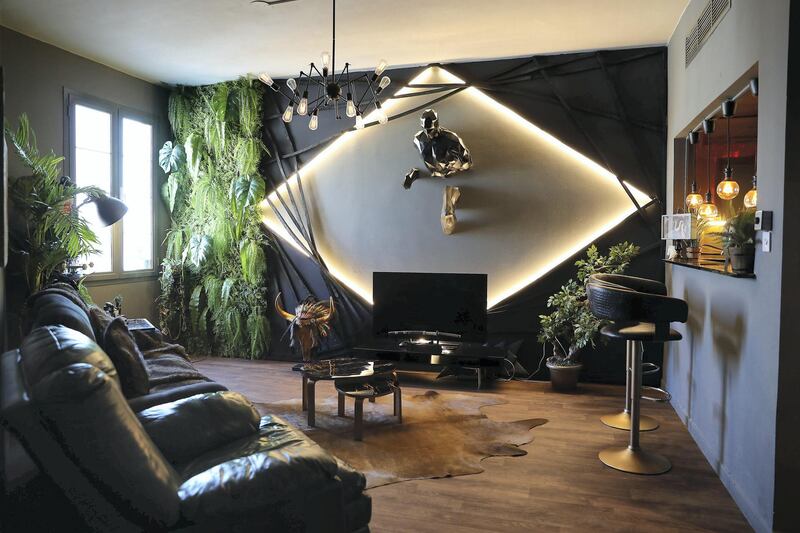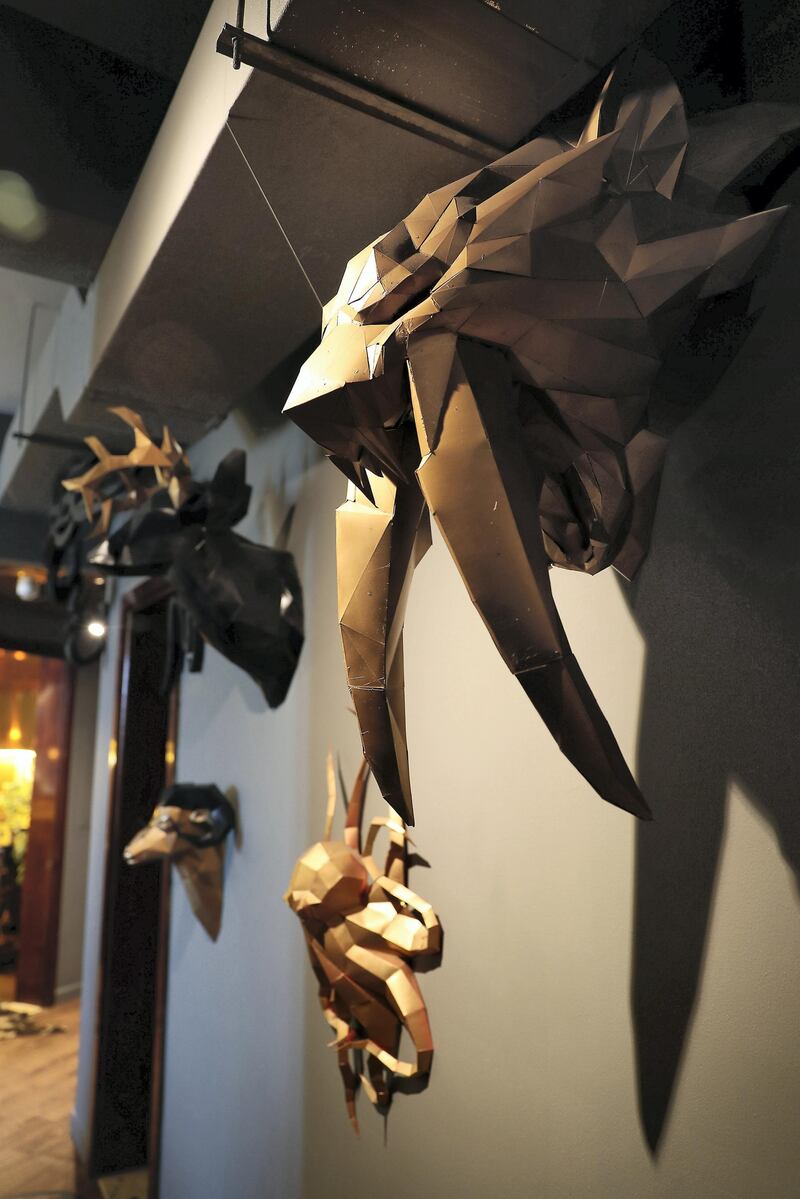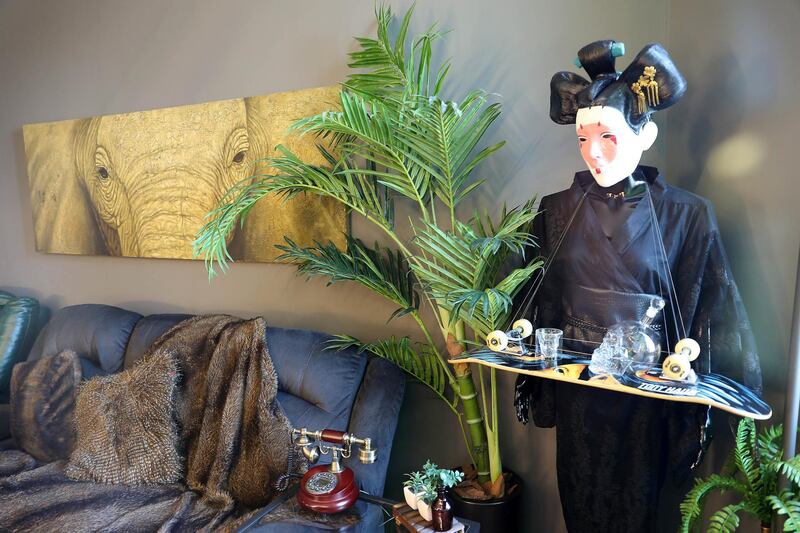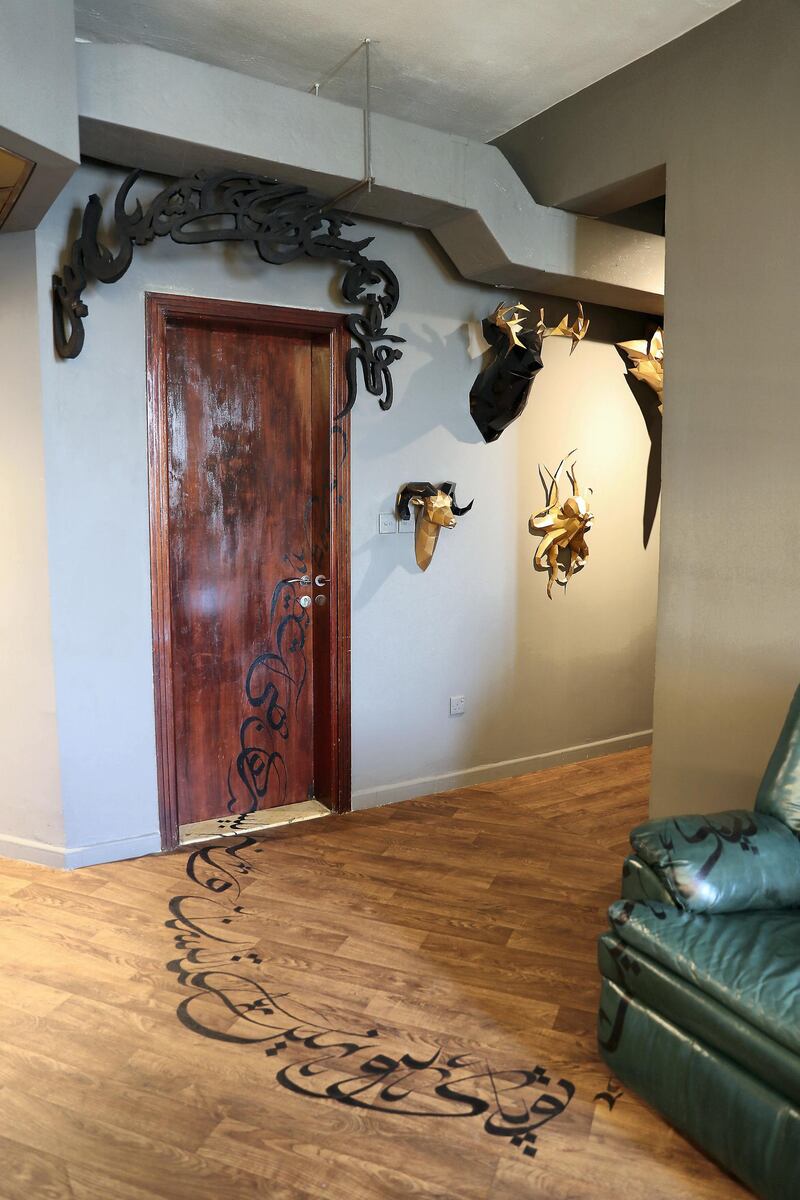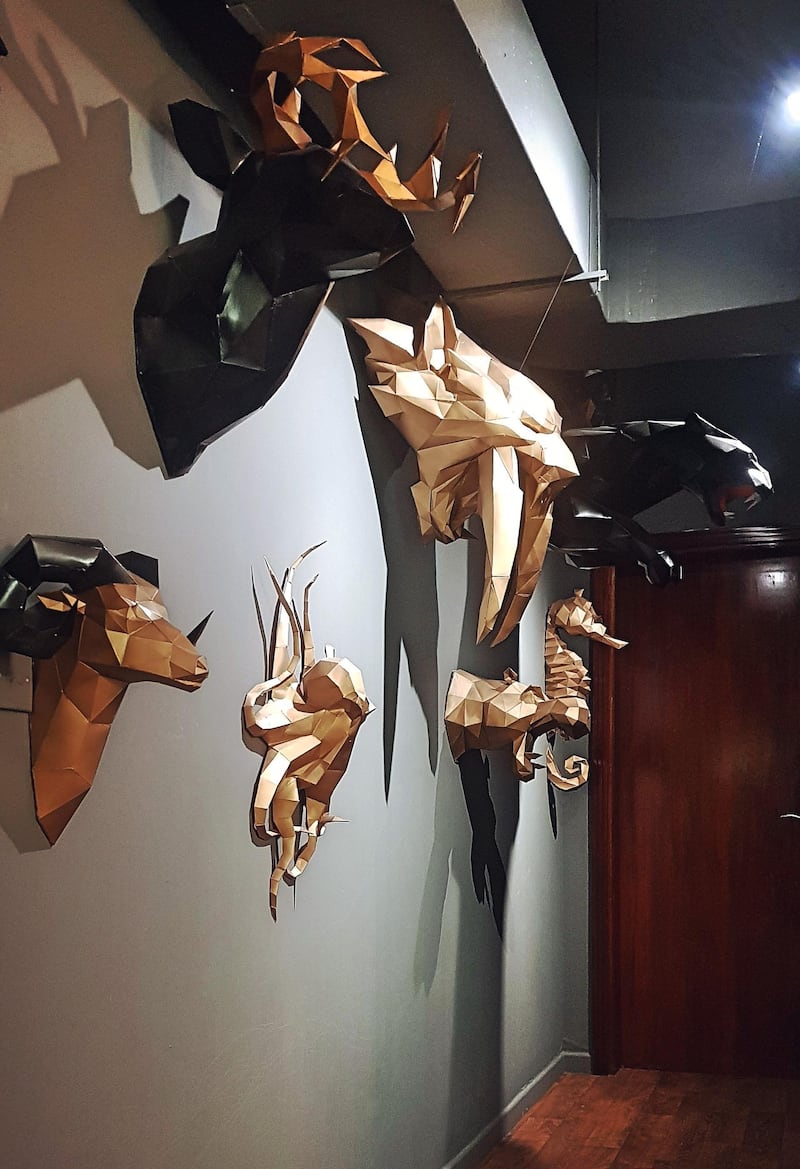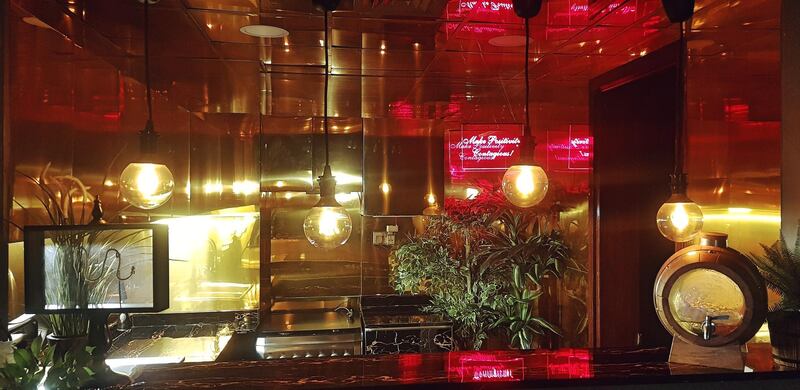Apartment blocks in big cities are often on the losing side of the uniqueness game, with every flat matching the hundreds of others that make up the same building and community. This is why it's so unique to come across a space that benefits from the enthusiastic and unbridled imagination of its residents, such as a two-bed corner apartment in the England cluster of Dubai's International City.
The door to the apartment opens on to the creativity of a young couple from Pakistan, Areeb and Fatima Hassan, and their little daughter, Aairah, whose family home is a bespoke and eloquent expression of their style and interests.
'It takes a lot of time and patience'
The hallway of the apartment is adorned with a collection of three-dimensional, wall-mounted geometric sculptures, a notional nod to hunting trophies. Pieces include a panther in a pouncing position, an octopus and a golden seahorse that appears as though it is swimming through the wall. Working with 3D software programmes to design the complicated origami-like forms, the couple taught themselves the necessary techniques by taking online tutorials.
“We failed so many times,” says Areeb. “It takes a lot of time and patience to make each model because each form is comprised of numerous pieces placed together, and follows the principles of origami, with mountain-fold and valley-fold techniques. If one piece is out of place, the entire structure won’t work,” he explains.
The sculptures are assembled from stiff paper, which is then sprayed with resin paint to complete the creations that transform the Hassans' hallway into an eye-catching arty space. The couple have been approached to collaborate and produce more of their sculptures but, although they have plans to do something commercial with their skills, they say that they want to take their time to master the software before they consider setting up a proper business.
While their apartment has two good-sized bedrooms, the couple felt that the shape of the living room – which is angled at a corner – might be problematic for furniture. Moreover, the space has only one window, which doesn’t let in a huge amount of light.
'It was kind of a wild idea'
To overcome what was a potential negative, Areeb designed a wall he calls "the portal". The central feature is a silver 3D sculptural figure emerging from the brickwork.
The living space is a rich dark grey, while a lighter shade has been used for the central portion of the portal wall. The panel is framed with dark foam strips in deep graphite, with a diamond-shaped strip of neon lighting – a combination that makes the wall appear three dimensional, and makes the angles of the room play as a strength.
“It was kind of a wild idea when I was doing it. I was looking for a dramatic shape and looking at a distorted frame,” says Areeb.
Elsewhere, an extract by poet Allama Iqbal, who is known as the Spiritual Father of Pakistan, is traced out in calligraphy. It begins as a foam-sculpted metallic swathe curling above a doorway, and transitions across the door and the floor, completing its journey on the edge of a green leather chair. "We needed something classic in our home," says Areeb, adding that the chosen script translates as "you can't be pure unless your heart is pure".
Areeb and Fatima first met in Islamabad, where their parents had arranged their marriage. "We never knew one another, but it turned out really well," says Areeb. Fatima adds that her then-fiancé encouraged her to watch the Japanese anime classic My Neighbour Totoro (1988), and it is this imagery that provided the inspiration for their geisha figure installation that carries an inverted skateboard, which acts as a serving tray. A shop dummy, unearthed at Dragon Mart, provides the base for the feature, and Areeb then had a kimono stitched to fit the figure and sourced a mask from a Chinese trader.
How much did the refurbishments cost?
The Hassans estimate that their living room and kitchen refurbishment cost Dh15,000, the majority of which was spent on transforming the latter. This was done using aluminium panels that were custom-cut at a warehouse in Al Quoz and applied to the cupboards, walls and ceiling. “We wanted something a bit brighter, a little like a nightclub, with multiple reflections on the ceiling and corners, to make the place spacious and warm with colour and golden light,” says Areeb.
A custom-made sign cut into acrylic and infused with pink neon light reads: "Make Positivity Contagious". The words reflects across the multiple surfaces in the kitchen, and is a policy the couple lives by. Areeb says Fatima encourages him in everything he does, even as she interjects to say: "He's always does something that's good."
_________________________
Read more:
The interior design trends to know for 2019
Four tips on how to create a mindful home
16 simple hacks that will make your lodgings look luxurious
_________________________
A floor-to-ceiling living wall, made up of silk and plastic plants, adds a pop of green to the apartment. "I love plants and my parents love plants, it runs in the family," says Areeb. "Yet the plants we bought here just didn't survive indoors."
Accordingly, a single potted cactus placed on the ledge outside the window is the only live plant. The green wall, which catches the morning sun, provides an irrigation-free connection to nature without maintenance or further mortality.
A chartered accountant who works as a financial analyst for an oil company, Areeb has the soul of an artist. In the past, he's developed a fashion line in Pakistan, and worked as a DJ and designed for music labels in London. Having rented previously, the couple took every opportunity to put their own mark on the blank canvas of their family home. At a time when many homeowners, and even some designers, reproduce the themes, styles and colour schemes found on Instagram and Pinterest, it's refreshing to come across a space that's so unique.
As Areeb says: "Interior design is like a greeting card – it's always better if you can make your own, as it helps you to express yourself."
